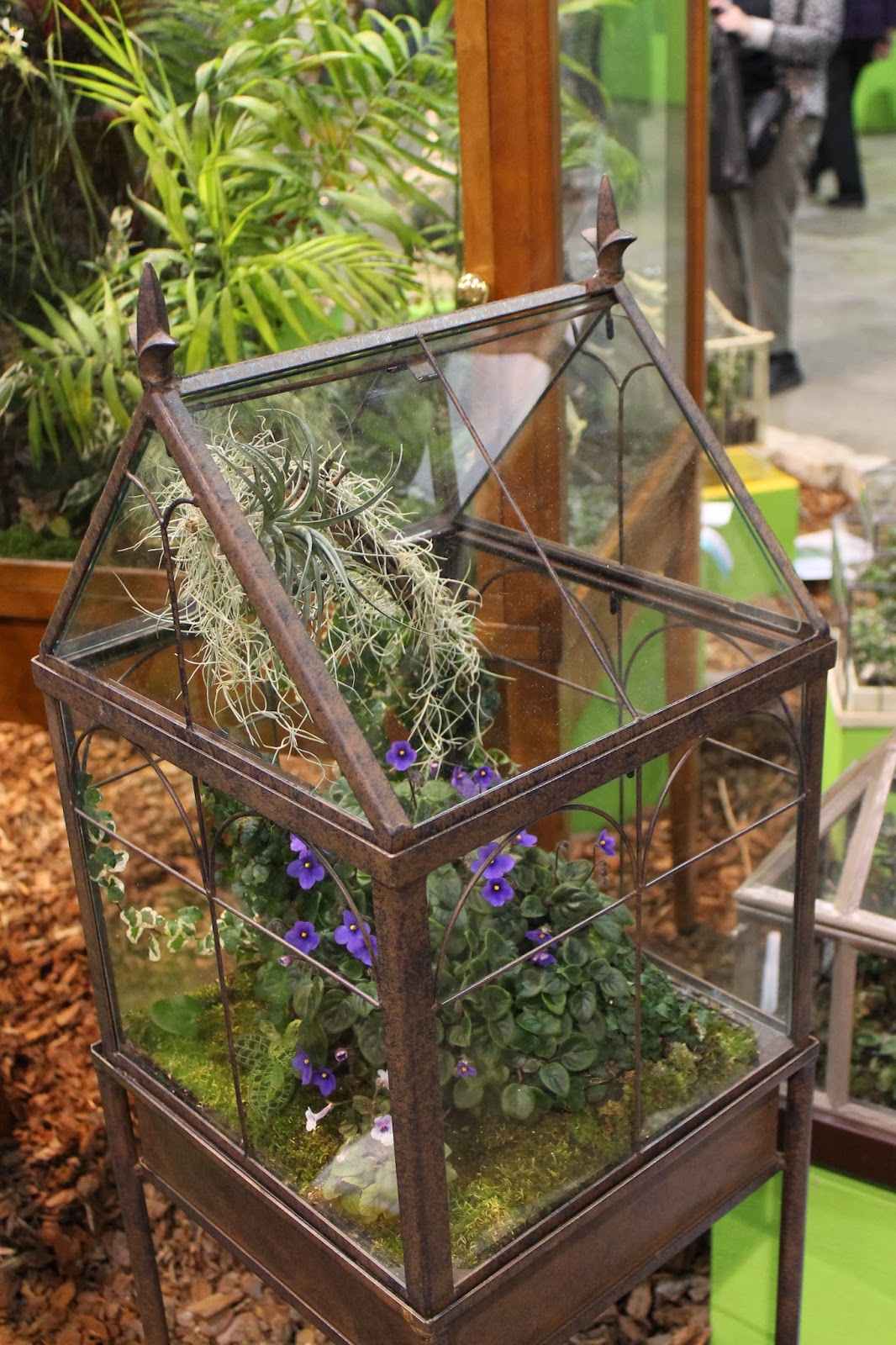For the gardeners who aimlessly show up at garden centers looking for something green to tend to in the winter, many are now carrying a variety of terrarium supplies, plants, and containers. I happened to be one of these aimless wanderers last week.
I became interested in terrarium gardening a few years ago when I visited the Philadelphia Flower Show. Here I saw not only great little displays in all kinds of containers, but I also was introduced to the supplies and plants themselves. I was so excited by the possibilities.
I bought a hanging terrarium and a few supplies that day along with some colored sand, glass pieces, and stones, and eagerly planted my own little world.
I visited Terrain the following summer and discovered, a huge selection of jars, supplies, and small terrarium plants. They had wonderful displays that made my mind race. What kind of container? What size? Lid or no lid? What kind of design? What plants? The possibilities seemed endless!
Finally I chose a jar and some plants and brought them home. Terrarium containers often range in price depending on size and complexity. Some can be quite expensive so I have had fun looking for containers at garage sales and antique stores, hunting for unique shapes and styles!
So with my interest piqued and a few successful terrariums under my belt, this winter I decided to experiment with a few more of these mini gardens, to see what I could come up with.
Over the last year or so, I have collected both closed and open containers, have tried orchids, mosses, ferns, african violets, and succulents. It is interesting to learn the environment in which particular plants will work, and those that will grow well together. Some prefer closed, humid environments, while others enjoy some air circulation.
Here are a few examples of my experiments so far.
One of my favorite terrarium tools...the mister.
I have directly planted the plants in soil in some of my containers, where I have added a layer of stones or gravel for drainage.
In the closed cloche however, I left the plants in their pots arranging them in levels using small terracotta pots. I like the variation in height and texture that this creates. I rarely have to water these plants, as the humidity and moisture circulates throughout the jar. To ensure that the container is not completely sealed, I added a layer of moss around the base. The fern does so well in this particular environment that I need to cut it back every once in a while.
I have found that when leaving the plants in their pots, they should be kept in a closed container, as open ones tend to dry out a bit more.
Certain plants however, such as succulents, do not like to be kept in a closed, humid environment. Paying attention to these requirements along with monitoring the plants will lead to a deeper understanding of their individual and group needs.
In the terrarium below, I noticed that many plants were drying out too quickly. I took a branch from a jade plant and planted it here, as jade plants do well in a drier climate. I added some chartreuse moss for color, a little Japanese bridge and little figure of an old man to this miniature world.
The design of each container is part of what makes this process so enjoyable and exciting. I have included rocks, shells, sea glass, and even geodes that I have collected over the years as landscape elements. I find that this returns these collected treasures to the landscape and highlights them on a microcosmic scale.




















No comments:
Post a Comment